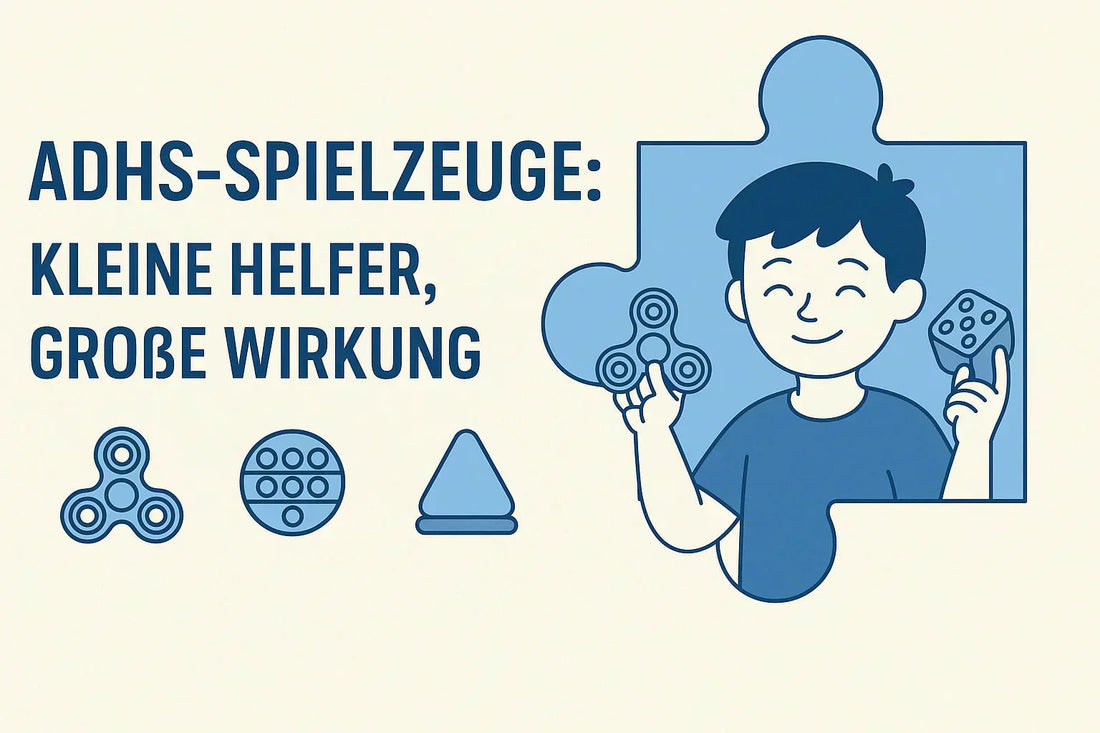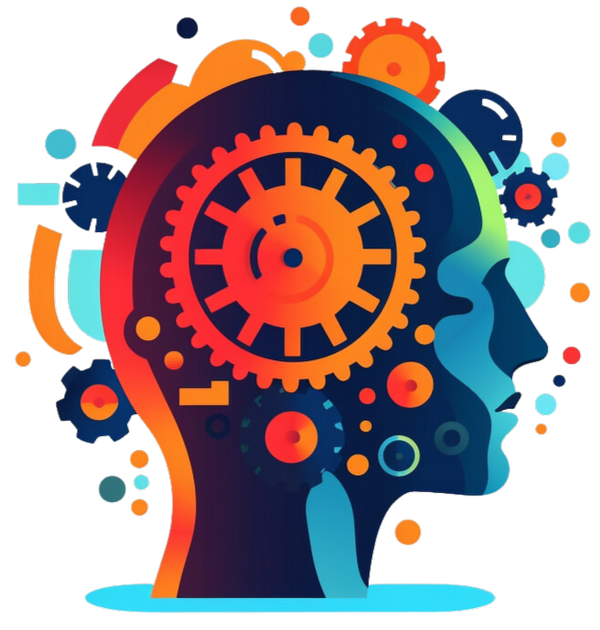
Fidget, Montessori & Co.: The best toys for ADHD
Share
Promote concentration, regulate stimuli, and ease everyday stress – ADHD toys are more than just colorful gimmicks. Read here what really helps.
ADHD means: overstimulation, impulsivity, an urge to move, and/or daydreaming (ADHD-H, ADHD-I, mixed type). For children, this is a constant balancing act. For parents, it's often nerve-wracking.
ADHD toys address this issue. They provide structure. They dampen overstimulation. They channel energy. The term encompasses many forms: fidget tools, educational puzzles, Montessori learning materials, and movement elements.
What they all have in common: They promote concentration – not through coercion, but through stimuli that make sense.

Stimulation, structure, self-regulation: The triad for focus
ADHD isn't a fad. It's a neurological quirk. A different way of dealing with everyday stimuli (often insufficiently exciting) or special incentives that can be extremely motivating and lead to hyperfocus.
The brain reacts differently overall. Dopamine utilization, filtering mechanisms, impulse control – all of these influence everyday life with ADHD. Compared to neurotypicals, who are a kind of "Volkswagen," people with ADHD are more like a "super sports car with bike brakes." They take longer to get going – but once they're moving, they're very powerful, fast, and almost unstoppable in their specialty.
Toys can't change that. But they can help to utilize or further develop ADHD-specific strengths and train/cushion weaknesses.

Take fidget toys, for example: They keep your hands busy. This reduces distractions. Your brain can focus on one task at hand without constantly looking for something more exciting.
Montessori-inspired materials offer a clear order. Touch, color, and shape are all interconnected. They're especially helpful for right-brain-dominant children who benefit from visual and tactile stimuli.
Kinetic sand, modeling clay, ploppers: calming. Movement toys? Ideal for children who can't learn without bouncing. Gifted toys, such as Maze Balls with a 3D labyrinth , captivate the eyes, brain, and hands with a challenging motor and intellectual activity.
The principle: Provide stimuli – high, but also targeted. Provide structure – but in a playful way. Enable self-regulation – without pressure and administrative overhead.

The 5 most popular categories of ADHD toys at a glance
1. Fidget Spinner & Co.
Small. Handy. Ready to use. Spinners, cubes, pop-its – ideal for school, waiting rooms, and homework time. Concentration is enhanced by simultaneous movement (old brain parts, like the cerebellum, and new ones, like the thinking frontal lobe, are used simultaneously).
2. Montessori toys
Wood, tactile, clear tasks . Promotes logic, order, and attention. Perfect for ages 3 to 10. Especially effective for visual learners.
3. Modeling clay & sand
Kinetic sand, slime, therapeutic modeling clay. Stimulates the sense of touch, relaxes the nervous system. Good for transitional phases or breaks.
4. Movement toys
Trampolines, balance boards, bouncy cushions. Movement activates the brain (even in neurotypical children). Ideal for children with a strong urge to move. At home or in therapy.
5. Structured learning games
ABC puzzles , logic games, color matching. A playful introduction to learning. Especially important for children with ADHD: clear rules and visible progress.
Each category targets different needs. The key is to experiment, observe, and adapt to your individual needs.

This makes practical use at home, at school or in therapy
Toys alone don't solve problems. Only when used correctly do they become useful tools.
At home: Fidget toy in the drawer. Educational puzzle before starting homework. Play-doh for recess. Gifted games for instant focus.
School: Consult with teachers. Fidget tools in silent work mode. Not a distraction, but a support. Opportunity to take movement breaks.
Therapy: Movement toys for targeted exercises. Montessori materials for concentration training.
Important: Don't overwhelm your child with too many choices. Test one toy at a time.
And: Playing together has a double effect. You can strengthen the parent-child relationship, build trust in your mentoring role, and provide the child with the necessary feedback regarding self-efficacy.

ADHD Toys: What You Can Take With You
(Learning) games are NOT about distraction. They're about a different approach to the world of learning.
Toys can provide a helpful channel for ADHD children to complete their homework. They provide structure, calm, and promote motivation.
Don't expect too much at the beginning. Sometimes the transformation begins with a simple wooden puzzle. Then, the puzzle or Lego set takes the shape of letters or numbers. And later, your child will read or write on paper because they have developed a close and meaningful relationship with the shapes of our 27 letters or the 10 Arabic numbers (0 to 9).
🧠 Frequently asked questions about ADHD toys
1. Which ADHD toys are suitable for everyday school life?
Fidget spinners, cubes, or small pop-its – discreet and silent – are good options. It's important to coordinate with teachers beforehand and use them effectively.
2. At what age do Montessori toys make sense for children with ADHD?
From about 3 years old. The clear structure and tactile appeal promote order and concentration – ideal for children up to about 10 years old.
3. How do I find out which toys really help my child?
Observe, test, reduce. Not too much at once. Every child reacts differently – small A/B tests in everyday life often produce surprisingly clear results.
